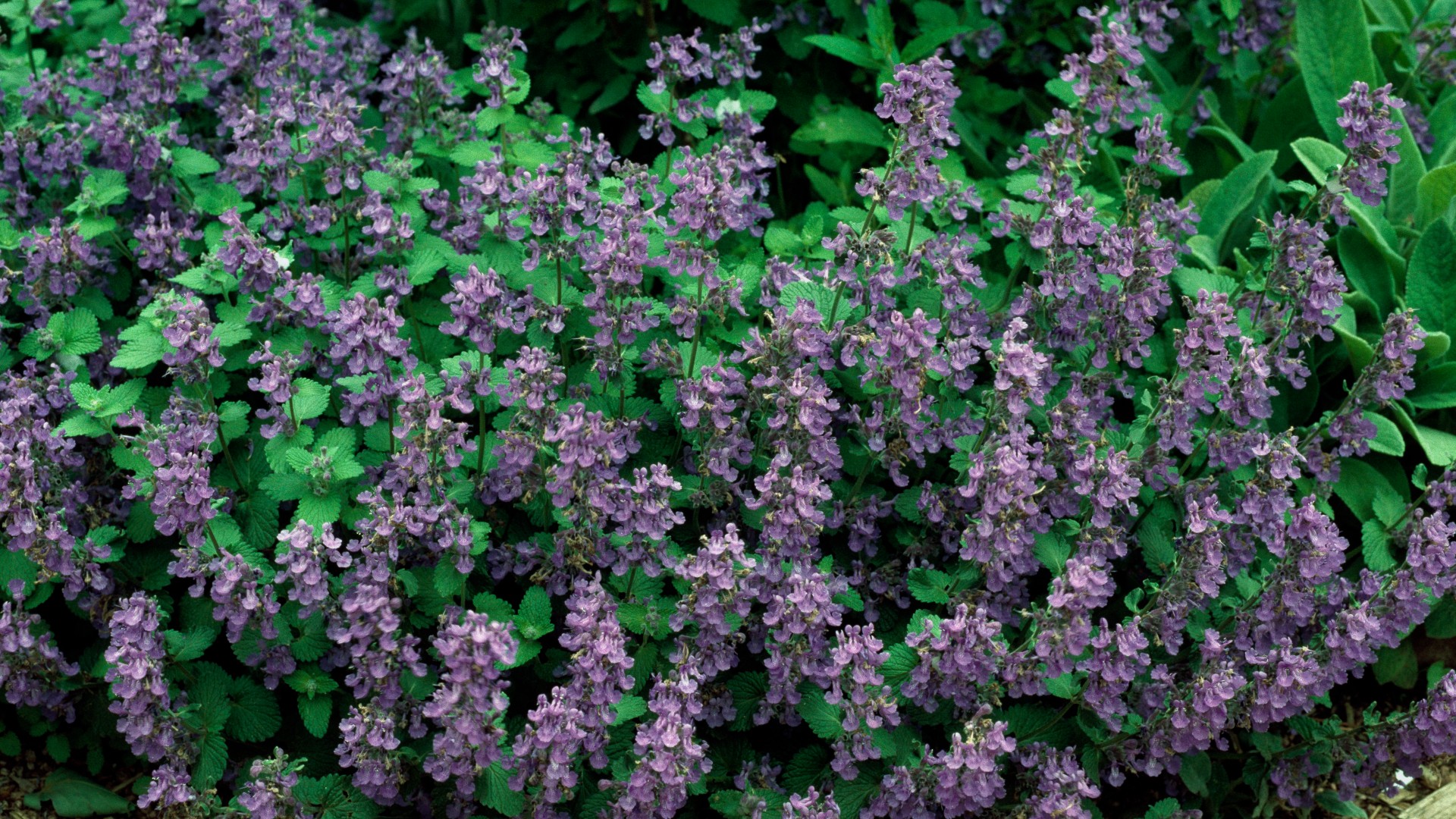Catmint vs Catnip: Are they the same thing?
Although often used interchangeably, the catmint vs catnip debate throws up some important differences

You may think there’s no real contest when considering catmint vs catnip. Just one look at your moggies when there is catnip in the vicinity is surely enough to convince you of that.
Even so, there is still some confusion between the two among feline enthusiasts given that both are similarly named and are part of the mint family. It’ll certainly do you no harm to know the differences between the two – even though, deep down, you’ve likely figured out that catnip and cats are a match made in heaven which is why you should keep your eyes peeled for the best catnip toys.
So let’s dig the dirt by looking at the common ground between these two humble plants while outlining where they differ. In doing so, we’ll work out which holds the key to your moggy’s heart in the battle of catmint vs catnip.
Catmint vs catnip: What's the difference?
First of all, let’s be clear: the biggest difference between catmint and catnip is the fact they’re different plants. Although they are similarly named, belong to the mint family and come from the Nepetagenus of flowering plants, as detailed in the Science Advances journal, they are separate species.
Catmint is Nepeta mussinii and Catnip is Nepeta cataria. Catmint is often planted in garden beds because of its lovely lavender flowers, while catnip has a much weedier appearance and comes with white flowers.
Catmint flowers more continuously than catnip and the leaves are often harvested for use in cooking because of their similar taste to mint. Unlike catmint, catnip is often used as a remedy for fevers, colds, cramps, and migraines, and can be turned into catnip tea for cats or humans.
Catmint vs catnip: Which one do cats want?

You probably know the answer already. Pit catmint vs catnip and only one reigns supreme as far as your kitty is concerned and that is… catnip! Whether it’s the best catnip toys or fresh catnip, most furkids can’t get enough of the heavenly green stuff.
Get the best advice, tips and top tech for your beloved Pets
Cats are attracted to a compound in catnip leaves known as nepetalactone. It makes them want to eat the leaves and it gives them the euphoric high we humans find so hilarious. Although responses are affected by age, sex and early gonadectomy in male and female cats, as detailed in a study published in Behavioural Processes, the smell of catnip alone can trigger a whole host of amusing behavior.
So, if your cat goes crazy after eating catnip and starts running around, excessively licking or chewing, shaking their head, rubbing, rolling, and salivating all over the place, don’t be alarmed – all of those behaviors are well documented side effects of being exposed to nepetalactone. It’s also why you should become acquainted with six creative ways to use catnip – it can help in many ways including introducing felines to new things.
While catmint also contains nepetalactone, it’s present in much smaller amounts, and although some kitties may still find catmint interesting, it’s unlikely to have the same enthralling effect as catnip.
Can cats eat catmint?

Although many plants in the mint family are toxic for cats, that’s usually only the case when they’re consumed in large quantities. The good news is that catmint is perfectly safe.
It’s unlikely you’ll find your kitty nibbling away on any catmint you have growing in your garden but if you do, rest assured it’s non-toxic so it won’t do them any harm.
Catnip on the other hand is worth paying more attention to. Although it’s safe and can aid a cat’s digestive tract, it is best given in moderation as too much catnip can be bad for cats. The same goes if you’re wondering “can kittens have catnip?”.
Common signs of a catnip overdose include diarrhea, vomiting, dizziness, and trouble walking. It’s important to monitor your kitty around catnip and to consult a vet if you think your moggy may have consumed too much of the green stuff.
Read next: Can cats eat catnip? and what is valerian for cats?

Kathryn is a freelance writer who has been a member of the PetsRadar family since it launched in 2020. Highly experienced in her field, she's driven by a desire to provide pet parents with accurate, timely, and informative content that enables them to provide their fur friends with everything they need to thrive.
Kathryn works closely with vets and trainers to ensure all articles offer the most up-to-date information across a range of pet-related fields, from insights into health and behavior issues to tips on products and training.
When she’s not busy crafting the perfect sentence for her features, buying guides and news pieces, she can be found hanging out with her family (which includes one super sassy cat and a kitten), drinking copious amounts of Jasmine tea and reading all the books.
She has written for a range of publications, including Fit&Well, Top Ten Reviews, LiveScience, Goodto, and Product Hunt.
- David CrookesFreelance writer

